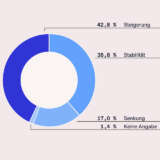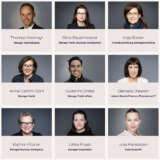© Adobe Stock | jes2uphoto
Confident comeback: German trade fair industry shows resilience amid strikes and pandemic aftermath
An article by Hendrik Hochheim, Head of Trade Fairs Germany at AUMA.
Hendrik Hochheim has been Head of Trade Fairs Germany at AUMA since 2021 and Managing Director of the Society of Voluntary Control of Fair and Exhibition Statistics (FKM).
© AUMA | Steffen Kugler
After the perseverative trade fair bans during the pandemic have ended, the trade fair industry in Germany is recovering visibly and noticeably. Since then, exhibiting companies have rediscovered the value of physical trade fairs after many virtual attempts. This is why the AUMA claim is now: "Trade fairs bring business to life". Trade fairs are the driving force behind new trends and are needed more than ever as a bridge between business, politics and research.
2025
For the vast majority of exhibiting companies, trade fairs are irreplaceable, as the latest AUMA Exhibitor Outlook 2024/2025 on trade fair planning shows. Most of the exhibiting companies want to increase their trade fair budgets or at least keep them stable. The level of participation in different trade fairs on a single or cross-industry theme is also expected to remain constant, provided that the political environment is not deteriorating (further). This applies to the world on the whole as well as to the federal government and even individual federal state policies.
For many exhibiting companies, the biggest pain point for exhibiting at trade fairs in future are the costs of travel, logistics, accommodation and catering, some of which have increased significantly since the pandemic. Some organisers are responding by cutting the duration of trade fairs and increasing the full-service level for their customers. Meanwhile, new technologies and artificial intelligence are helping to digitalise information transfer and key processes, keeping cost increases in check.
Visitor expertise, networking and a tight focus on solving specific problems are becoming more important. Motivating the relevant community to visit the trade fair, is the nucleus of increased marketing activities for exhibiting companies and trade fair organisers. The most important task is to address visitors in a personalised manner and in doing so to ensure customer satisfaction. The sustainability of the trade fair stand and the event as such is becoming a key consideration for visitors, requiring joint action by organisers and exhibitors.
2024
More than 330 trade fairs are planned for 2024 — almost 180 of which are leading national or international trade fairs. This year also sees the return of those shows that take place every several years. They are returning from their pandemic hiatus or postponement to their once established rhythms and dates in the trade fair calendar.
Whereas in the past the travelling connections to Germany's 70 exhibition centres were reliable, today's trade fair participants are being put to a particularly tough test. In the first quarter, more than 50 exhibitions were affected by rail-, public transport- and airport-strikes. Compared to figures from previous years, the strikes are likely to have resulted in at least 222,000 fewer visitors - an average drop of eleven per cent. Will this still be in everyone's mind at the end of the year when the final accounts are on the table? Missed talks and business deals that Germany urgently needs in a weakening economy are affecting the industry directly.
The AUMA Organiser Outlook provides information on the robust state of the organising industry: In the medium term, almost 50% of trade fair organisers want to further consolidate their international flagship fairs in Germany. At the same time, around 35% want to step up their international business. Three-quarters believe that German trade fairs will perform just as well or better in international competition over the next twelve months. The vast majority of German trade fairs compete in their own country and in the European Union. Other significant competitive markets include North America, South, East and Central Asia, and the Middle East.
At the beginning of the year, the German Economic Institute published an evaluation of all sectors in Germany that surprised many observers. The trade fair industry was identified as the sector with the highest level of confidence concerning 2024. There is hope, confidence and courage, where otherwise strong sectors are more cautious about the year ahead. It is also important to note, however, that the German trade fair industry faced significant challenges during the COVID pandemic from 2020 to 2022.
Trade fair year 2023
- 320 out of 360 scheduled trade fairs were held. The majority of the cancelled trade fairs were regional trade fairs open to the public.
- 22 trade fairs were held for the first time. Topics covered included construction and energy, with a focus on sustainability and digitalisation, and hospitality.
- More than 183,000 exhibiting companies and 11.4 million visitors were registered.
- 96,000 exhibitors came from abroad, a good third more than in 2022.
2023
marked the first year after the COVID pandemic with a complete trade fair calendar from January to December. (Only after the pandemic restrictions haven been cancelled nationwide in May 2022 Germany’s trade fair season started.) The trade fair industry is demonstrating a notable recovery from the coronavirus crisis, with significant growth compared to 2022. It's amazing! Several industry trade fairs have enjoyed a successful post-COVID comeback. A total of 320 trade fairs were held, including many with biennial or other long-term cycles. Some 40 trade fairs were cancelled, mainly in the first quarter, when trade fairs are usually strong - most of them regional trade fair shows. The increased costs of energy and services are having a significant impact on them. Nevertheless, almost two dozen trade fairs made their début in 2023. The topics covered included construction and energy, with a focus on sustainability and digitalisation, and hospitality. No trade fair was purely digital anymore.
Around 11.4 million visitors and 183,000 exhibiting companies flocked to the 70 trade fair centres in Germany. The robust recovery is particularly evident when compared with 2022: an increase of 50% in visitors and of 30% in exhibitors leave every doubt about the importance of trade fairs behind.
A total of 6.34 million square metres of space were booked. Of this, 5.2 million square metres of space were booked at the 166 major trade fairs of international or national importance. Over 7.5 million visitors and 147,000 exhibiting companies came together.
International players returned to the trade fair destination Germany in impressive numbers. 96,000 exhibiting companies came from abroad. In 2022, this figure was a good third lower. China has regained its top position among exhibiting nations from 2019 (14%) after the COVID-related postponements of the previous two years. The second strongest exhibiting country is Italy (12%), ahead of Turkey (5.2%), which is in the top group for the first time.
Germany as a trade fair destination
in 2023 compared with 2022
Number of trade fairs
Total exhibitors
Stand space:
Visitors
© AUMA / May 2024, excluding new events








